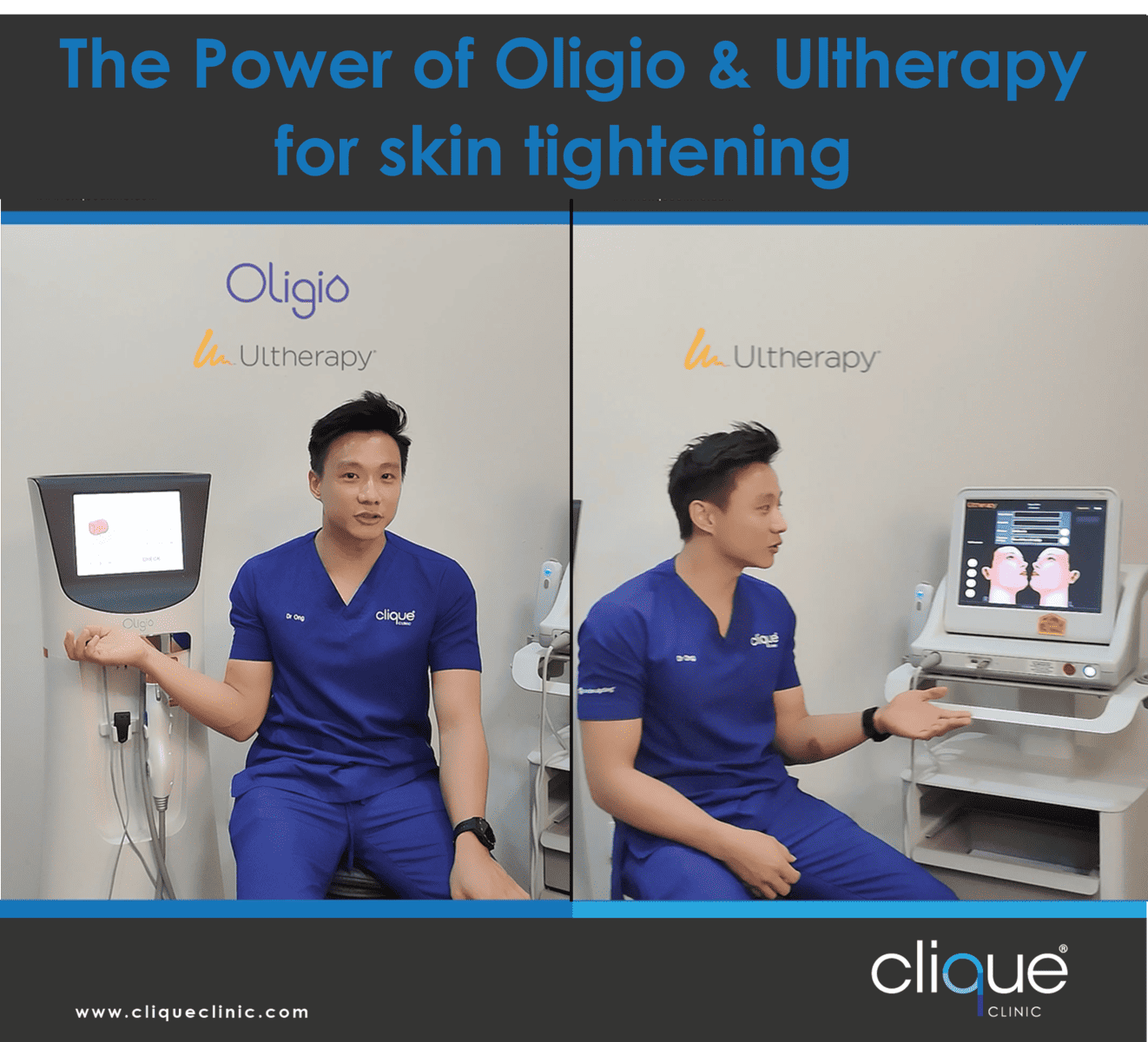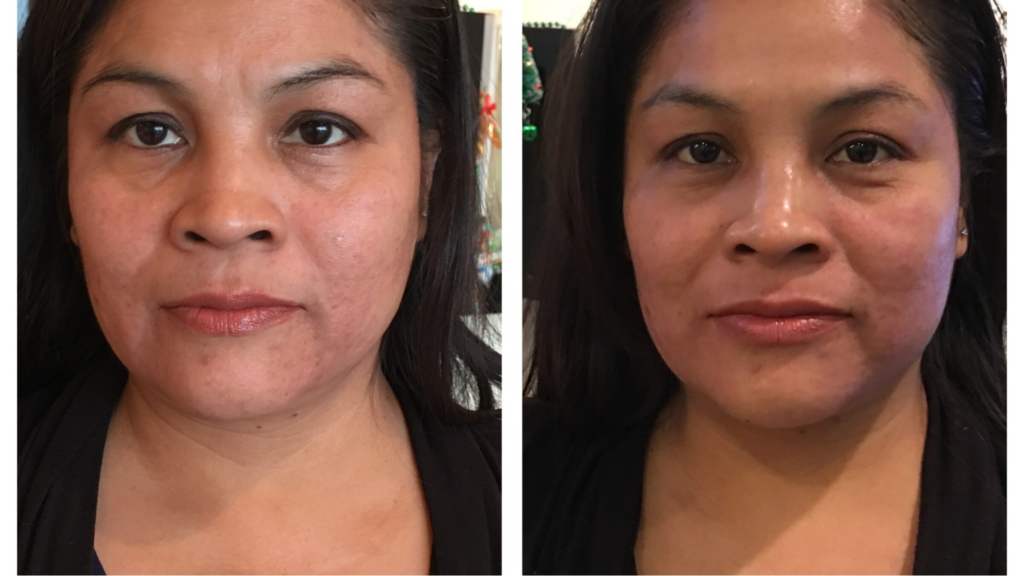Why Ultherapy May Be Medically Essential: Checking Out the Factors for a Non Surgical Lift
Ultherapy is obtaining interest as a feasible choice for people dealing with skin laxity as a result of aging or details medical conditions. This non-surgical therapy stimulates collagen production, supplying a service that prevents the recovery time related to invasive procedures. As people look for to enhance not just their look but likewise their overall skin health and wellness, understanding the conditions that warrant Ultherapy's use comes to be important. What factors add to its medical need?
Understanding Ultherapy: What It Is and Just how It Functions
Ultherapy, a non-invasive cosmetic treatment, utilizes ultrasound technology to boost collagen production and promote skin tightening. By providing focused ultrasound energy deep into the skin, it targets the fundamental layers generally addressed in surgical facelifts. This process encourages the body's all-natural recovery action, leading to gradual lifting and tightening up of the skin gradually.

Therapy sessions typically last between 30 to 90 mins, depending on the dimension of the area being treated. While results may not be quickly visible, suitable results generally show up within two to 3 months as collagen remains to create. Ultherapy deals a compelling non-surgical option for individuals looking for skin restoration without the demand for invasive procedures.
The Aging Refine: Effects on Skin Elasticity and Collagen
Aging unavoidably brings changes that reduce skin elasticity and collagen production, resulting in visible indications of drooping and wrinkles. As individuals age, the skin's capability to maintain moisture decreases, resulting in a drier and less resilient surface area. Collagen, a necessary protein liable for skin structure, also lessens, creating the skin to lose its suppleness and youthful appearance. Factors such as sun direct exposure, toxic wastes, and lifestyle selections further increase this decrease in skin quality.
This loss of elasticity and collagen creates a cascade of modifications, including the formation of jowls, deepening nasolabial folds, and a total sagging look. The skin's support group deteriorates, making it much more susceptible to the impacts of gravity. Numerous individuals seek treatments like Ultherapy to deal with these aging results, intending to restore a much more youthful, taut appearance without the demand for intrusive medical treatments.
Medical Problems That May Take Advantage Of Ultherapy
Ultherapy is progressively identified for its potential benefits in addressing various medical conditions. People experiencing skin laxity, those in post-surgical healing, and individuals with persistent skin conditions might find this non-invasive therapy useful. By promoting collagen manufacturing, Ultherapy can enhance skin suppleness and boost overall look for these teams.
Skin Laxity Problems
Skin laxity can be a significant issue for people experiencing different medical conditions that affect the integrity and flexibility of their skin. Conditions such as Ehlers-Danlos disorder, which interrupts collagen production, can bring about early skin aging and drooping. In addition, individuals with autoimmune disorders might experience skin modifications that add to laxity. Hormone variations, especially during menopause, likewise contribute in lessening skin suppleness. Ultherapy, utilizing ultrasound technology, targets the deeper layers of skin, boosting collagen production and tightening up the influenced areas. This non-invasive therapy may offer a viable option for those seeking to attend to skin laxity arising from these medical conditions, improving both look and self-confidence without the requirement for surgical treatment.
Post-Surgical Recovery Help
Post-surgical recuperation can typically existing challenges, especially for people experiencing skin laxity as a result of surgical interventions. Ultherapy serves as a prospective aid in this scenario, utilizing ultrasound technology to stimulate collagen production and improve skin tightness without invasive treatments. Patients who have actually gone through surgical procedures such as facelifts, liposuction, or other body contouring treatments might find that Ultherapy enhances their recuperation by resolving unequal appearance and laxity that can occur post-operation. This non-surgical method can cause enhanced visual results, possibly reducing the need for additional medical interventions. In addition, it may assist relieve discomfort related to the healing procedure, offering people an extra all-encompassing healing experience. As a result, Ultherapy can be a valuable option in post-surgical treatment.
Persistent Skin Problems
For individuals experiencing persistent skin problems such as acne marks, rosacea, or laxity as a result of aging, non-invasive therapies may offer considerable alleviation and improvement. Ultherapy you could look here has actually become a promising option, utilizing ultrasound innovation to promote collagen manufacturing deep within the skin. This procedure can boost skin structure and flexibility, resolving concerns like uneven skin tone and drooping. Specifically, those with rosacea may experience lowered soreness and inflammation, while clients with acne scars can profit from boosted skin level of smoothness and overall look. Importantly, Ultherapy supplies a non-surgical alternative that reduces recovery time and risks related to invasive procedures, making it an attractive selection for people looking for effective management of chronic skin disease.
Psychological Impact of Sagging Skin and Visual Problems
The emotional toll of aging typically shows up in the form of drooping skin, which can greatly influence an individual's self-confidence and general mental well-being. Numerous individuals link youthful appearances with energy and good looks, bring about sensations of insufficiency when confronted with noticeable indications of aging. This perceived decline in elegance can cause social stress and anxiety, withdrawal from social communications, and an increased preoccupation with one's appearance.
People may really feel compelled to look for aesthetic therapies to combat these worries, as the desire to keep a younger look can come to be linked with individual identification. The emotional impacts of drooping skin might likewise bring about anxiety or a diminished high quality of life. Subsequently, non-surgical alternatives like Ultherapy arise as possible solutions, aiming not just to rejuvenate the skin but also to bring back confidence and a favorable self-image, inevitably attending to the deeper psychological implications of aging.
Comparing Ultherapy to Standard Surgical Options
When comparing Ultherapy to standard medical alternatives, significant distinctions arise in both cost-effectiveness and recuperation time. Ultherapy offers a non-invasive strategy that usually causes reduced expenses and minimal downtime for clients. In comparison, surgical lifts normally call for even more economic investment and an extended recovery period.
Cost-Effectiveness of Ultherapy

Although conventional surgical lifts commonly come with considerable upfront costs and prolonged recovery times, Ultherapy offers a compelling their explanation choice that can supply equivalent outcomes at a fraction of the cost. The average price of a medical facelift can vary from $7,000 to $15,000, while Ultherapy therapies normally fall in between $2,000 and $4,500, depending on the area dealt with and company knowledge. In addition, the lack of comprehensive pre-operative evaluations and post-operative treatment connected with Ultherapy better adds to its cost-effectiveness. This strategy not just reduces financial strain however additionally permits clients to spend in various other facets of their wellness and health. In this method, Ultherapy arises as a financially feasible choice for those seeking face renewal without the problems of traditional surgical treatment.
Recovery Time Contrast
Recovery time is a significant consider the decision-making procedure for those considering cosmetic procedures. Ultherapy attracts attention as a non-surgical option that usually needs minimal downtime. A lot of clients can return to their daily tasks practically quickly, experiencing just mild redness or swelling that normally settles within a couple of hours. In comparison, traditional surgical alternatives, such as renovations, usually necessitate a prolonged recovery period. People may face numerous weeks of swelling, wounding, and limited task, with some going back to typical regimens occupying to 3 months. This plain difference in recovery time makes Ultherapy an appealing option for people looking for efficient outcomes without the extensive aftercare connected with surgical procedure, enabling for a smoother adjustment back to everyday life.
The Long-Term Conveniences of Non-Invasive Treatments for Skin Wellness
As individuals increasingly seek choices to procedures, the long-lasting benefits of non-invasive therapies for skin health and wellness become a lot more noticeable. Treatments such as Ultherapy, chemical peels, and laser treatment deal significant benefits without the demand for substantial recuperation times connected with surgery. Ultherapy Malaysia. Gradually, these non-invasive choices can promote collagen production, causing firmer skin and a much more vibrant look
Furthermore, normal non-invasive therapies can enhance skin structure, tone, and flexibility, boosting overall skin wellness. People usually experience fewer issues and negative effects, making these treatments a lot more enticing.
The cumulative results of constant therapies can maintain and lengthen visual renovations, permitting people to keep their wanted look with minimal downtime. By prioritizing non-invasive techniques, people can achieve long lasting results while prioritizing their wellness and wellness. Ultimately, the lasting benefits of such techniques emphasize their expanding appeal in contemporary skincare.
Often Asked Inquiries

For how long Does an Ultherapy Session Commonly Take?
An Ultherapy session commonly lasts in between 30 to 90 minutes, relying on the therapy location. Factors such as the individual's particular needs and the degree of the treatment can influence the general duration.

Exist Any Kind Of Adverse Effects Linked With Ultherapy?
Ultherapy can click to read more cause adverse effects such as short-term inflammation, swelling, or inflammation in the treated location - Skin tightening treatment KL. While a lot of people experience very little pain, it is critical to get in touch with an expert for customized recommendations and possible reactions
How Soon Can I See Results After Therapy?
Arise from Ultherapy typically begin to appear within two to 3 months post-treatment. The full results might remain to develop over six months as collagen production boosts, causing visible training and firm of the skin.
Is Ultherapy Suitable for All Skin Kinds?
Ultherapy is generally ideal for various skin types, including lighter and darker tones. Nonetheless, individual skin problem and worries may impact its effectiveness, making assessments with a certified expert crucial for tailored suggestions.
Just How Commonly Should Ultherapy Treatments Be Duplicated?
Ultherapy treatments are normally advised every 6 to twelve month, relying on individual skin disease and desired results. Routine assessments by a qualified specialist can aid figure out the very best regularity for maintenance and efficiency.